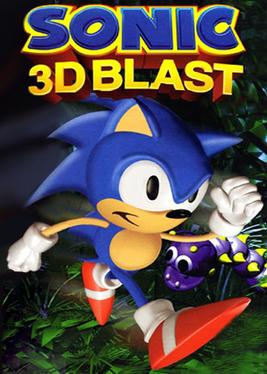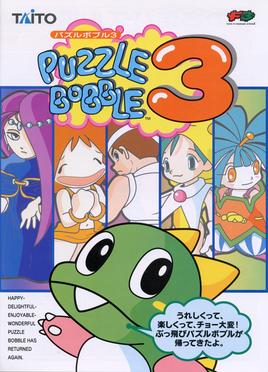
Hexen: Beyond Heretic is a fantasy first-person shooter video game developed by Raven Software and published by id Software distributed through GT Interactive on October 30, 1995. It is the sequel to 1994's Heretic, and the second game in Raven Software's "Serpent Riders" trilogy, which culminated with Hexen II. The title comes from the German noun Hexen, which means "witches", and/or the verb hexen, which means "to cast a spell". Game producer John Romero stated that a third, unreleased game in this series was to be called Hecatomb.

Zoop is a puzzle video game originally developed by Hookstone and published by Viacom New Media in 1995 for the Genesis, Super Nintendo Entertainment System, MS-DOS, Macintosh, PlayStation, Game Gear, and Game Boy, then in 1996 for the Saturn and Jaguar. Zoop has similarities to Taito's 1989 arcade video game Plotting, but Zoop runs in real-time instead. Players are tasked with eliminating pieces that spawn from one of the sides of the screen before they reach the center of the playfield. By pointing at a piece and shooting it, the player can either swap it with the current player color and thus arrange the same color pieces in a row or column, or match the color.

Sonic 3D Blast, known in PAL regions as Sonic 3D: Flickies' Island, is a 1996 platform game in the Sonic the Hedgehog series for the Sega Genesis and Sega Saturn. As Sonic the Hedgehog, the player embarks on a journey to save the Flickies, birds enslaved by Doctor Robotnik. The player must guide Sonic through a series of themed levels to collect Flickies and defeat Robotnik. Though it retains game mechanics from prior Sonic games, Sonic 3D Blast is differentiated by its 2D isometric perspective, with pre-rendered 3D models converted into sprites.

Discworld is a point-and-click adventure game developed by Teeny Weeny Games and Perfect 10 Productions and published by Psygnosis. It is based on Terry Pratchett's novels of the same name. Players assume the role of Rincewind the "wizzard", voiced by Eric Idle, as he becomes involved in exploring the Discworld for the means to prevent a dragon terrorising the city of Ankh-Morpork. The game's story borrows elements from several Discworld novels, with its central plot loosely based on the events in Guards! Guards!

Wipeout 2097 is a 1996 racing video game developed and published by Psygnosis for the PlayStation, the second installment of the Wipeout series following the original game released the previous year. It was ported the following year to Microsoft Windows and the Sega Saturn, and later also to Amiga and Macintosh.

Virtua Fighter 2 is a 1994 fighting video game by Sega. It is the sequel to Virtua Fighter (1993), and the second game in the Virtua Fighter series. Created by Sega's Yu Suzuki-headed AM2 team, it was designed on the purpose-made Sega Model 2 hardware which provided a significant upgrade in graphical capabilities. Following its release on the arcades, Virtua Fighter 2 was ported to the Sega Saturn home console in November 1995, while ports for some other platforms appeared later.

Enemy Zero is a 1996 horror-themed adventure video game for the Sega Saturn, developed by Warp and directed by Kenji Eno. Players assume the role of an astronaut who awakens from cryogenic sleep to find her spaceship overrun by invisible creatures who are hunting and killing the ship's crew. They must navigate through the ship in a combination of puzzle-driven exploration rendered in full motion video and first-person shooter sections rendered in real time, during which they must rely on sound to either avoid or kill the invisible enemies.

Madden NFL 98 is a 1997 football video game. It was the last edition of the Madden series to be released for the Super NES, Genesis and Sega Saturn platforms, as well as the last Madden game to utilize 2D sprites for the players and referee, on 3D playing fields.

NBA Live 98 is a basketball video game based on the National Basketball Association and the fourth installment of the NBA Live series. Its cover art features Tim Hardaway of the Miami Heat. The game was developed by EA Sports in 1997 for Windows, PlayStation, and Sega Saturn, while also being the final NBA Live game released for the Super NES, Genesis, and Sega Saturn.

Puzzle Bobble 3 is an action puzzle video game developed by Taito. The second sequel to Puzzle Bobble, it was released for arcades in September 1996 and later ported to the Sega Saturn, PlayStation, Game Boy, Nintendo 64 and Microsoft Windows. Like its predecessors, the player is tasked with shooting balls at groups of balls, creating groups of three or more, which are then removed from play. Further ports for the Nintendo Switch, PlayStation 4 and Xbox One were released in February 2023 by City Connection alongside Puzzle Bobble 2.

Darklight Conflict is a space combat simulator video game developed by Rage Software and published by Electronic Arts in 1997 for the MS-DOS, and the Sega Saturn and Sony PlayStation game consoles. Players take on the part of a contemporary human fighter pilot abducted by the alien Repton species during an aerial battle, and biologically modified to become a starfighter pilot for them in their war against the Evil Ovon race.

Frankenstein: Through the Eyes of the Monster is a point-and-click adventure video game that stars Tim Curry as Dr. Frankenstein, and has the player controlling a newly created Frankenstein monster. Other cast members include Robert Rothrock as the voice of the monster, Rebecca Wink as villager Sara, and Amanda Fuller as Gabrielle, the monster's daughter. It used full motion video clips and 3D CGI graphics similar to Myst. The game was developed by Amazing Media and published by Interplay Entertainment Corp for the PC in 1995 and for the Sega Saturn in 1997. The game was given a "Teen" rating by the Entertainment Software Rating Board, but was originally rated as K-A. A port for the Atari Jaguar was in development but never released.

NHL 97 is an ice hockey video game by EA Sports. It was released in 1996 and was the successor to NHL 96. It is the sixth installment of the NHL series and the first to be released on both PlayStation and Saturn. A Panasonic M2 version was in development and slated to be one of the launch titles for it, but never happened due to the cancellation of the system.

Worms is a 2D artillery tactical video game developed by Team17 and released in 1995. It is the first game in the Worms series of video games. It is a turn based game where a player controls a team of worms against other teams of worms that are controlled by a computer or human opponent. The aim is to use various weapons to kill the worms on the other teams and have the last surviving worm(s).

Maximum Force is a light gun shooter arcade game developed by Mesa Logic for Atari Games in 1997. In 1998, Atari Games re-released the game as part of one machine called Area 51/Maximum Force Duo that also included Area 51, and later ported the game to both the Sony PlayStation and Sega Saturn game consoles.

Madden NFL 97 is a football video game released in 1996. It was the first Madden game released for the PlayStation and Sega Saturn. 16-bit versions were also made for the established Super NES and Genesis platforms, as well as a portable version for the Game Boy.

NBA Live 97 is the third installment of the NBA Live video games series. The cover features Mitch Richmond of the Sacramento Kings. The game was developed by EA Sports and released in 1996. The MS-DOS, Sega Saturn and PlayStation versions featured polygonal models for the on-court players, thus marking it as the first 3D EA Sports Basketball sequel for the series. It was also the first NBA Live released for the Sega Saturn. The game received mostly positive reviews for its advanced graphics and wide array of available moves and plays, though the Saturn conversion was reviled for numerous technical deficiencies. NBA Live 97 is followed by NBA Live 98.

Soviet Strike is a helicopter-based shooter game developed and published by Electronic Arts for the PlayStation in 1996 and the Sega Saturn in 1997. The game is a sequel to the Strike games which began on the Sega Genesis with Desert Strike: Return to the Gulf. Soviet Strike is the series' first installment for a 32-bit console and was first conceived as 32-bit Strike. Early on, it was intended for the 3DO platform, before development changed to the PlayStation.

NBA Fastbreak '98 is a basketball simulator released for the Sony PlayStation in 1997. It takes place during the 1997-98 National Basketball Association season. It was published by Midway Games and GT Interactive. Originally announced under the title "Hardwood Heroes", the game was released with minimal changes as NBA Action 98 on Sega Saturn and Microsoft Windows, published by Sega. Another version was being developed by Z-Axis for the Nintendo 64 under the title "NBA Fast Break 64", with a prospective November 1997 release, but it was cancelled.

Swagman is a 1997 action-adventure video game developed by Core Design and published by Eidos Interactive in Europe for the Sega Saturn and in North America for the PlayStation. In the game, players assume the role of Zack and Hannah to free the imprisoned Dreamflight fairies and stop the villain Swagman from unleashing his horde of monsters upon the world, whose inhabitants cannot wake up from their nightmares. The title was developed in conjunction with other projects at Core Design, taking influence from the works of Tim Burton. Versions for both the 32X and Atari Jaguar CD were announced but not released. It was received with mostly positive reception from critics.




















